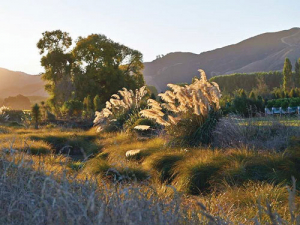All 300 plus pages. It will take a long time to read through the entire of the review, so NZW is planning to segment the report to allow members access to parts that are relevant to themselves. NZWinegrower magazine will be following that, with reviews of the key themes over the next few issues, bringing you the most relevant information.
But to begin, this issue we look at the salient points as presented at member workshops recently.
The review address’s three areas; strategic industry themes, 11 review questions covering supply, demand, regions, NZW factors research, sustainability, technology, celebrating success, regulations and what it all means to NZW.
“We spent time understanding and looking at the role that NZW plays in the industry, the levers that NZW has and what the priorities should be, PwC spokesman Patrick Lyons said.
Summarising the report, Lyons said there are three key shifts.
Enhancing the industry’s reputation
“Once you get on the wrong side of a reputational issue it becomes very, very difficult with the wider public to get back on side again.”
What that actually means to NZW and what they can do about it, and what the future priorities should be, the PwC report says there needs to be a significant evolution of the sustainability activities via NZW and its members.
“The position of the New Zealand wine industry as sustainable adds to the reputation of the New Zealand wine industry both with consumers and retailers and internationally. Making sure that is enhanced is a huge industry priority.”
Advocacy also comes under that industry reputation banner, Lyons said. NZW and members need to support the industry’s social license to operate.
Responding to changing market dynamics
Understandably in this area, the reliance on Marlborough Sauvignon Blanc as the lead varietal came under scrutiny. Particularly given New Zealand has the highest concentration in one prime varietal of any wine producing country in the world, with Sauvignon Blanc representing 74 percent of New Zealand’s total production in 2017.
“When you look at that across a number of key markets, there are changing dynamics in certain countries and being able to respond to those is critical to the on-going success of the industry.”
Research will play a major role in this area moving forward. In order to be able to respond to changes in market conditions, there needs to be research into new wine styles, ongoing research into productivity, and ways to enhance yield while maintaining quality.
The marketing aspect of NZW will also play an important role in mitigating those changing market dynamics.
“The marketing activity needs to be revitalized to keep it fresh and innovative so it continues to be effective in those markets. When you think about NZW’s marketing spend of about $3 million, it really is a drop in the ocean when you think about other broader marketing budgets. We need to be very clear when we talk about NZW marketing. It’s about supporting market development, it’s about reputation and providing the influencers in those markets to understand what it is about the New Zealand wine category.”
Managing and mitigating risks to profitability
Having up to date research on pests and diseases is a vital component of this. As is research on climate change and building resilience, and research on reducing input costs.
“Make sure the benefits of that research is shared with the wider industry. Only through that will you get the benefits across the industry,” Lyons said.
He emphasized that everything within the report has to be underpinned by maintaining quality and distinctive wine styles.
NZW response
The board of NZW accepted the report at its October meeting. Members of the working party that worked alongside PwC during the review will be retained and the board committee chairs will be added to this to work on implementation.
“We want some unification in response to this,” Chairman of the board John Clarke says.
Deputy Chair Clive Jones says sustainability came out of the review as one the key critical areas, particularly in terms of retaining reputation.
“Sustainability has got to become part of every conversation we have across all of our activities. Not only in the sustainability group itself, but in marketing, advocacy and research.”
The survey of members undertaken during the review showed that a third were disengaged, and found SWNZ an imposition. Another third were engaged and quite positive, while the final third were highly engaged and wanted more to be done in this field.
Jones says it may be that some areas currently covered by SWNZ need to be removed to some other form of stipulation and allow SWNZ to concentrate on what is really important to the wine industry.
Communication of the New Zealand wine sustainability story needs to be stronger, across all fields, he said.
Our wine by numbers
These are the facts about New Zealand wine, in numbers:
- New Zealand produces 400,000 tonnes of grapes a year. That equates to 310 million litres
- 413 million bottles of New Zealand wine are sold a year - which equates to nearly 2.5 billion glasses a year. Which is a third of a glass for every man, woman and child on the planet.
- There are 67 million glasses of New Zealand wine sold every day, 283 million glasses sold every hour, 5,713 glasses every minute or 79 glasses of New Zealand wine sold every second of the year.
- Consumers world-wide are spending over $7 billion on our wine a year.










